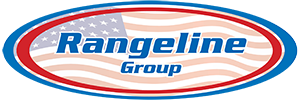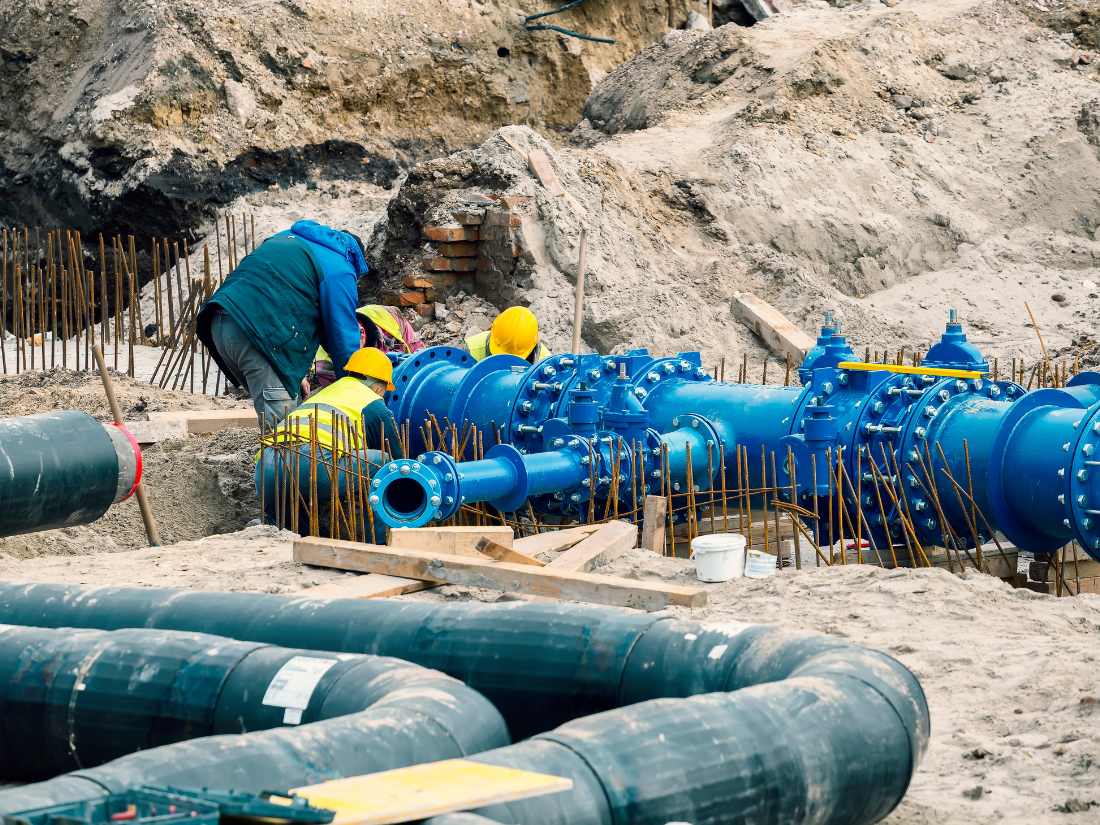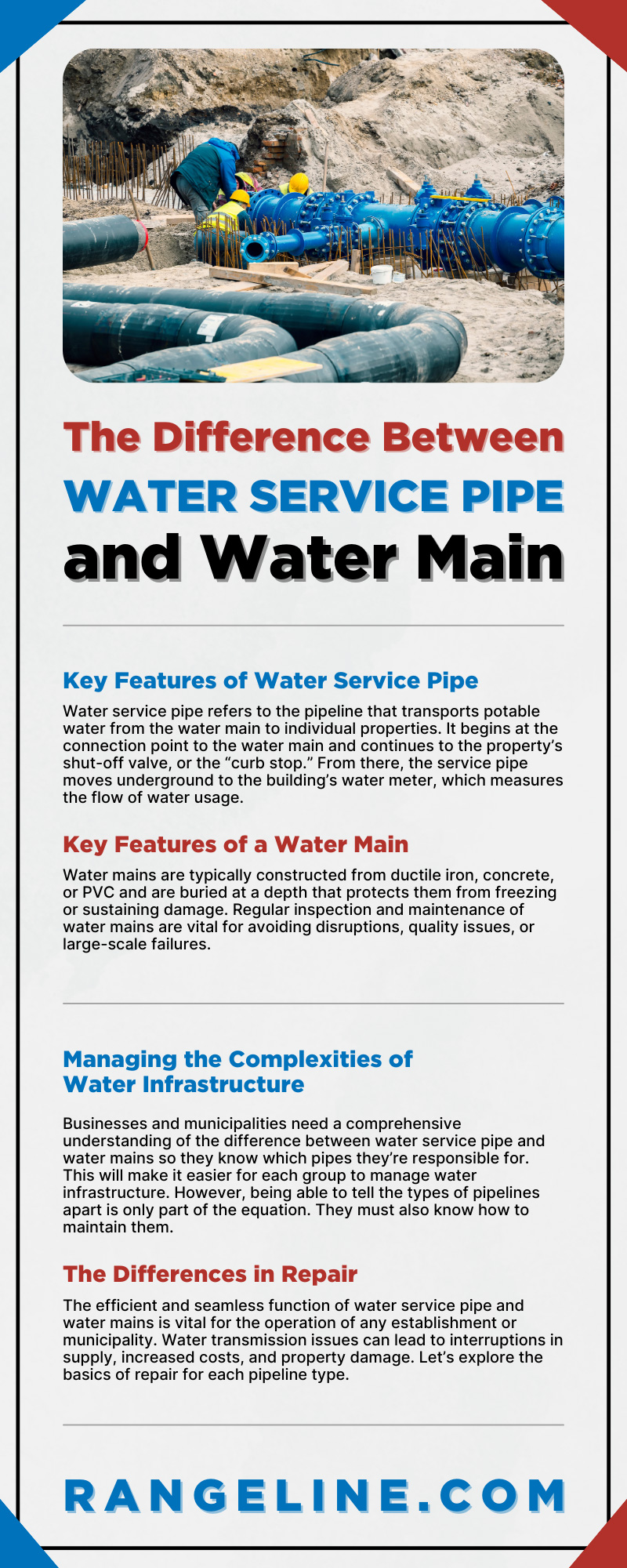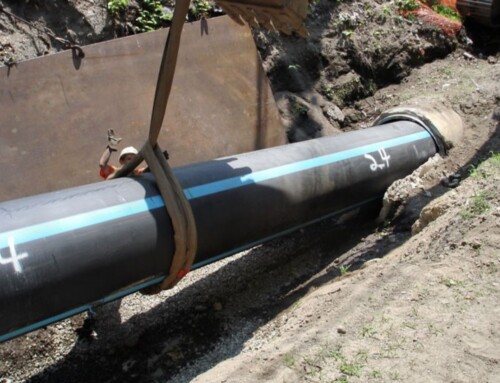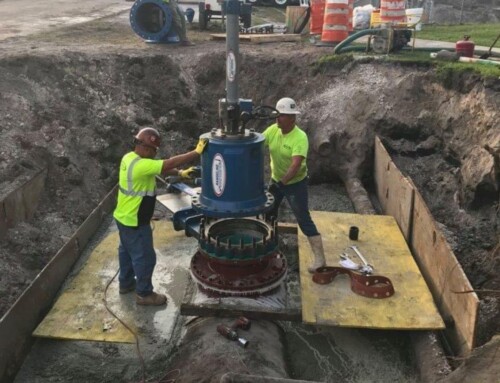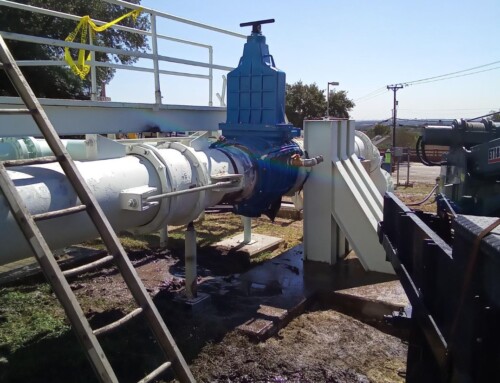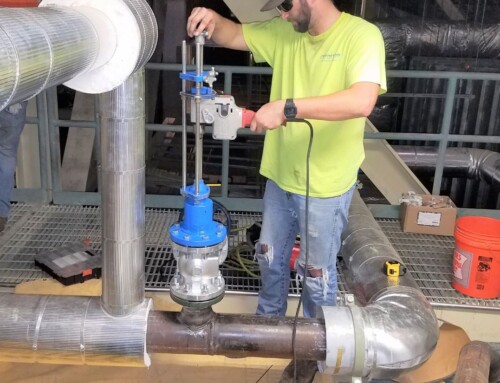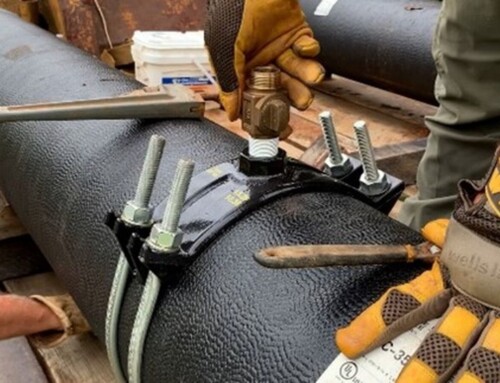Managing and maintaining a water distribution system requires understanding the various components. One common area of confusion is distinguishing water service pipe from water mains. We’ll dive into the key differences between these two essential water system components to help you navigate and manage your water infrastructure.
Key Features of Water Service Pipe
Water service pipe refers to the pipeline that transports potable water from the water main to individual properties. It begins at the connection point to the water main and continues to the property’s shut-off valve, or the “curb stop.” From there, the service pipe moves underground to the building’s water meter, which measures the flow of water usage.
Water service pipe is vital for carrying clean, potable water for consumption and use by occupants of the property. The pipe is made of materials like copper, polyethylene, or PVC, and size can vary depending on the building’s water requirements.
Maintenance, repair, and replacement of water service pipe typically fall under the property owner’s responsibility, although this may differ depending on local regulations.
Key Features of a Water Main
Water mainlines form the backbone of a water distribution system. They are the arteries that transport water from the treatment facility to the properties within a city, town, or region. These large-diameter pipes are essential for supplying water to the network of water service pipe.
Municipalities or regional water authorities install and maintain water mains. They are responsible for ensuring the adequate supply of potable water to the community they serve. Water mains also provide water for fire protection through the connection of fire hydrants.
Water mains are typically constructed from ductile iron, concrete, or PVC and are buried at a depth that protects them from freezing or sustaining damage. Regular inspection and maintenance of water mains are vital for avoiding disruptions, quality issues, or large-scale failures.
Managing the Complexities of Water Infrastructure
Businesses and municipalities need a comprehensive understanding of the difference between water service pipe and water mains so they know which pipes they’re responsible for. This will make it easier for each group to manage water infrastructure. However, being able to tell the types of pipelines apart is only part of the equation. They must also know how to maintain them.
The Differences in Repair
The efficient and seamless function of water service pipe and water mains is vital for the operation of any establishment or municipality. Water transmission issues can lead to interruptions in supply, increased costs, and property damage. Let’s explore the basics of repair for each pipeline type.
Identifying the Issue
Before addressing problems in water service pipe and mainlines, you must identify the root cause of the issue. Common issues include leakages, burst pipes, blockages from foreign objects, or sediment buildup. Here’s how you can check for these issues:
Visual Inspection
Look for signs of leaks or cracks along the pipeline and around joints. This could be an indication of corrosion or external forces causing damage.
Observing Pressure and Flow
Irregular changes, such as sudden decreases in pressure and flow, could be due to internal blockages or external forces affecting the pipeline.
Monitoring Usage Patterns
Unusual increases in water consumption could point to leaks in the water service pipe or mainline system.
Repairing Water Service Pipe
After identifying the problem, you must take the appropriate steps to repair it. The process for water service pipe and water mains differs, so we’ll start with the former and explain how to restore functions.
External Leak Repair
In cases where the leak is visible, you can repair or replace the pipe, depending on the extent of the damage. This typically involves the following steps:
Isolating the Affected Section
Turn off the water supply to the damaged portion of the pipe to prevent further leaking.
Excavation and Exposure
Depending on the depth and location of the pipe, excavation may be necessary to access and repair the pipe.
Pipe Repair or Replacement
The affected section of the pipe may need repairs or replacement, depending on the extent and type of damage.
Internal Pipe Repair
For internal issues with water service pipe, such as blockages, you can use a combination of techniques to clear the pipes. These may include hydro-jetting or using specialized equipment to dislodge and remove sediment and debris.
Repairing a Water Main
Repairing a water main is complex due to its size and capacity, so you’ll need specialized knowledge and equipment. If you don’t fit the bill for this undertaking, you can hire a group of skilled workers that does. Here’s what you’ll need to do to repair a water main.
Leak Detection and Pipe Inspection
Since water mains are almost exclusively underground, you’ll need to use advanced leak detection methods, such as acoustic equipment or camera inspections. These methods can locate and assess most issues within the water main system.
Repair or Replacement?
Most water main repairs are more in-depth than water service pipe repairs. Depending on the issue and the potential impact on the surrounding environment, you can use various repair techniques:
Localized Repair
A targeted repair or replacement may be the most effective solution for a confined issue. This could involve repairing small leaks or cracks or replacing a section of the mainline.
Trenchless Techniques
In cases when traditional excavation is not feasible, you may employ trenchless techniques, such as pipe bursting or cured-in-place pipe (CIPP) lining. These methods involve minimal disruption to the surrounding environment and are generally more cost-effective and time-efficient than localized repairs.
Professional Assistance and Expertise
Regardless of the method you choose or the water infrastructure you’re dealing with, it’s best to leave these repairs to the professionals. This is especially true if you want to keep your pipes operational during repairs. Fortunately, you’re already in the right place!
At Rangeline Group, we specialize in the wet tapping method. When we wet tap a water line, we perform the necessary repairs while the system is under pressure. This method is perfectly safe, and we’ll keep everything operational throughout the whole process.
